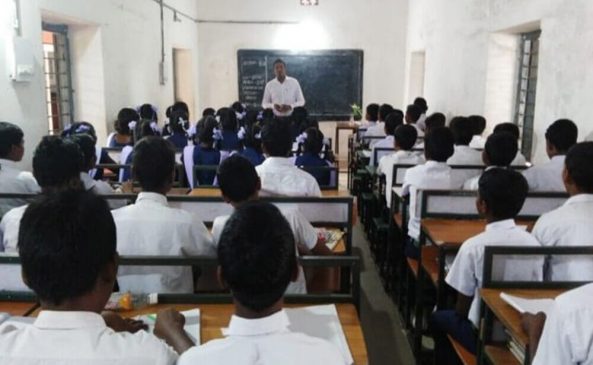Prusty’s involvement in his alma mater is part of ‘Mo School’, Odia for ‘My School’, a government programme launched in 2017 by Chief Minister Naveen Patnaik to transform educational infrastructure across the state.
The walls of the only primary school in Tolakani village, in Odisha’s Jajpur district, are freshly painted. The school has a ‘knowledge house’ with books and magazines and it will soon have smart classrooms with projectors and interactive whiteboards, and a sports complex too.
The village school’s transformation from a run-down structure to one of the most sought-after in these parts came about in the last one year, thanks to Hrudananda Prusty, a 22-year-old metallurgical engineer working in Bengaluru who pledged two months of his salary for the school. Prusty –who studied in the Tolakani school till his Class 3 before shifting to a hostel in Cuttack — will now contribute 10 per cent of his monthly salary to revamp the school.
Prusty’s involvement in his alma mater is part of ‘Mo School’, Odia for ‘My School’, a government programme launched in 2017 by Chief Minister Naveen Patnaik to transform educational infrastructure across the state.
Amarjit Jena, Chief Operating Officer of the Mo School programme, said the aim of the campaign is to create a platform for people to connect, collaborate and contribute towards revamping public schooling in Odisha. The campaign has reached over 33,000 schools in the state and connected over five lakh alumni in India and abroad.
“We have left it to the community, village, alumni and school administration to decide and work on what kind of changes they wish to implement,” said Jena.
Having spent a considerable amount of time in his village during the pandemic, Prusty, the metallurgical engineer from Tolakani village, also began a ‘Chalk and Duster’ initiative, roping in retired teachers and professionals to teach academically weaker students in the village. “The idea is not just to push them for studies but to also discover their talent. Say, if a student is struggling academically but is good in sports or singing, we can help that student pursue her talent,” said Prusty.
“Several IAS officers, politicians and reputed people have come forward for this drive. Why can’t common people like me lend a hand?,” said Prusty.
Besides alumni involvement, the campaign has two other components — school adoption and 5T school transformation.
Under the school adoption programme, any member of the society can come forward to adopt a government school of her choice and contribute half of the development cost, with the government sharing the rest.
Apart from financial support, the mentors can organise coaching classes or career counselling sessions for students, invite motivational speakers, set up awards or incentive schemes to motivate students, run mentorship programmes and influence alumni to come forward for the development of the school.
Since the launch of the adoption scheme in January this year, 1,380 people — including judges, state ministers, lawmakers, bureaucrats, administrative officers, corporates, among others — have expressed their interest.
Under the 5T transformation scheme, which was launched in February, the focus is on providing quality infrastructure and ensuring basic amenities in high schools across the state.
In Bankipali village of Sonepur district, Himanshu Bisi, a BSF jawan, has pledged Rs 1,000 every month as his contribution to develop the panchayat high school where he studied. When he visits school while on leave, he conducts yoga and PT classes for the students.
“This is a transparent method to donate to schools. Our contribution does not end at just giving money, but we also participate in decision-making with other members of the village and community,” said Bisi.
Rengalpatra village of Bargarh district recently got its first primary school, with villagers pooling in land and contributing Rs 12,06,030 towards the school.
“A lot of our children are enrolled in hostels because there are not enough schools or the existing schools are not good enough. But we would want our children to live and study here before they go out for higher studies,” said Daitari Bariha, a villager who donated 40 dismil of his land for the school.
The pooled funds have been used for renovation of classrooms, putting up graffiti on walls, procuring furniture and setting up smart classrooms.
Officials said the budgetary allocation for Mo School was increased to Rs 253 crore in 2021-22, six times more than the previous fiscal.
During the pandemic, the campaign was able to gain major contributions from alumni and others. Some weeks ago, projects worth Rs 95 crore were approved for various schools under the campaign, of which Rs 11.56 crore was received as contribution from alumni and other philanthropic organisations.
According to officials, the maximum alumni contribution — Rs 50.57 lakh — has come to Mahalinga high school, in the remote Golmunda block of the tribal-dominated Kalahandi district.





































